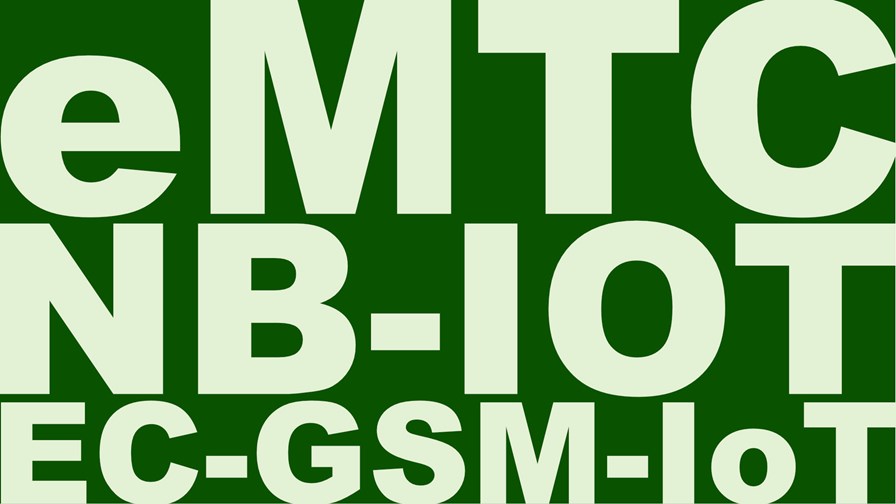
© TTV
- Cellular IoT technologies summarised
- Differences between eMTC, NB-IOT and EC-GSM-IoT
- Technologies will form part of 3GPP Release 13
To say that IoT technologies are confusing is an understatement. No sooner have we got to grips with the various LPWA network alternatives for unlicensed spectrum operation, than the cellular community quickly got its act together and started work on its own dedicated IoT solutions. Fragmented? You bet. Although we should start to see a more cohesive and aligned approach very soon.
Thankfully, the helpful folk at 3GPP have produced a guide to the three cellular IoT specifications that are currently under development. Now you’ll have no excuse to confuse your eMTC from your NB-IOT and your EC-GSM-IoT. 3GPP Release 13, which will be locked down later this month, contains a number of IoT initiatives for cellular operators.
3GPP RAN Chairman, Dino Flore, presented a status report during last week’s Mobile World Congress event, guiding us through the three headline technologies being specified.
There are three related IoT specifications being created by the 3GPP for cellular networks. If you want the full facts and figures, then we suggest you download the 3GPP presentation, but here is our summary:
Enhanced Machine Type Communications (eMTC)
The aim of eMTC is to create a solution that supports low cost devices with long battery lives over large distances and with variable rate transmission. It should be able to be deployed in any existing LTE spectrum, support FDD, TDD and half duplex modes, and coexist with other LTE services within the same bandwidth. A software update will enable existing LTE base stations to be reused for eMTC.
Specifically, the aim is to support IoT devices that cost about the same price as GSM and GPRS devices, can last about ten years operating with 5 watts of battery power, and transmit at between 10kbit/s and 1Mbit/s. Narrowband operation will require just 1.08MHz of bandwidth, and there will be a new power class of 20dBm (in addition to the 23dBm standard across all three technologies).
Narrowband Internet of Things (NB-IOT)
Like eMTC, the idea behind NB-IOT is to support devices with battery lives of about ten years when used with 5 watts of power, but at an even lower cost point. There should be even greater operational coverage as well as support for around 50,000 devices per cell. There will be narrow band support of 180kHz (the clue is in its name, after all), two uplink modes, and peak transmission rates of 250kbit/s.
The specification will support three distinct modes of operation. A stand-alone mode will utilise spectrum currently used by GERAN systems as a replacement of one or more GSM carriers; guard band mode will operate with the unused resource blocks within a LTE carrier’s guard-band; and in-band mode will use resource blocks within a normal LTE carrier.
Extended Coverage GSM for Internet of Things (EC-GSM-IoT)
Again, EC-GSM-IoT is intended to support devices with battery life of around ten years at 5 watts of power. The “extended coverage” part of its name gives it comparable coverage to both eMTC and NB-IOT, and it should operate at 200kHz per channel with a typical system bandwidth of 2.4MHz (although operation at a reduced bandwidth of 600kHz is being studied within LTE Rel-13).
Like NB-IOT, it will support massive IoT deployments of up to 50,000 devices per cell. Device costs will be similar to existing GPRS/GSM units, but there will be much greater security built-in (specifically, integrity protection, mutual authentication, and stronger ciphering algorithms). Other features include relaxed idle mode behaviour (in other words, reduced monitoring of neighbouring cells) and optimised system information.
So there you have it; the three IoT technologies within the latest 3GPP specifications. We are going to have to wait some time though for the ideal scenario, where three becomes one. In the meantime, we wait to see what impact these technologies have on the IoT connectivity sector, and whether or not they will enable cellular operators to nip the threat of the likes of Sigfox and LoRa in the bud, side-lining them as they once did to the WiMAX community. Cellular may be late to the IoT party, but don’t underestimate its collective muscle.
Email Newsletters
Sign up to receive TelecomTV's top news and videos, plus exclusive subscriber-only content direct to your inbox.




